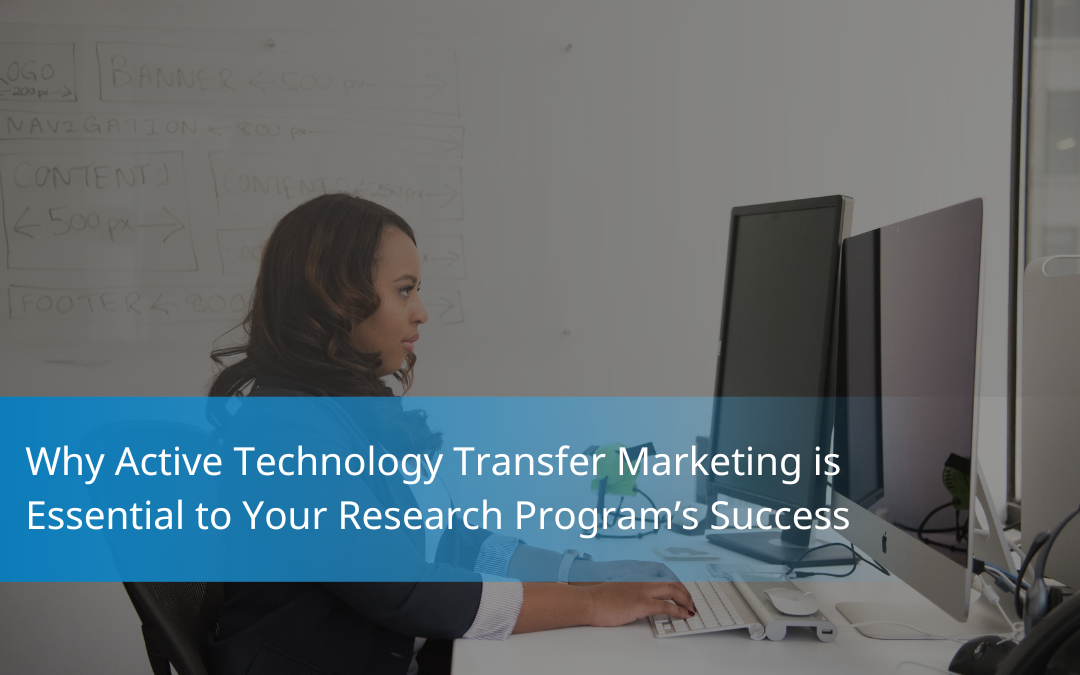Technology transfer is by no means new, but the expectations of technology transfer offices (TTOs) have evolved in recent years. Institutions that fail to adapt risk getting overlooked by top-tier research staff and graduate students, not to mention when seeking funding.
Technology transfer is the formal transfer of rights from the research institution to another party for the use—and often commercialization—of discoveries and inventions. The process involves several steps and multiple stakeholders, so it’s difficult for TTOs to manage, particularly if they’re small.
Without the right tools to support every stage of the process, many institutions struggle to take an active role in finding a home for these inventions. They simply don’t have the resources to actively promote every invention in their portfolio, so they list them on an online portal and hope for the best.
At one time, the TTO effectively served as the last stop for many promising inventions. But, thanks in part to the rise of the startup, that approach has been changing.
Tech transfer offices are increasingly expected to take an active role in finding a home for their institution’s research outcomes. In this post, we’ll explore passive versus active marketing in technology transfer and explain why the latter is essential to your research program’s commercial and reputational success.
Passive tech transfer marketing
The most common form of passive tech transfer marketing is posting technology listings online for potential licensees to find. The phrase “passive marketing” is something of a misnomer, because it implies an absence of action when, in fact, the journey to bringing a disclosure to the listing stage involves substantial effort.
By the time an invention has been listed, TTOs have already done a great deal of legwork, expending resources in screening, triage, and knowledge transfer. They’ve put in the time to understand the technology, what it can do for end users, and why potential consumers might care.
Tech listings can increase the online presence of your TTO and enable licensees to find your technology in a search, but this approach is known as “passive” because it doesn’t involve active promotion. You’re relying on the prospect to find you, rather than the other way around.
None of which is to suggest that passive marketing is without merit. Tech listings help populate your website and present your institution as a capable research organization. Listings can even give you a place to point prospects you engage with active marketing efforts. But passive marketing efforts are merely one piece of the commercialization puzzle; when used on their own, they’re incomplete.
Active tech transfer marketing
Active tech transfer marketing, on the other hand, helps foster a culture of innovation by actively promoting institutional inventions and seeking out potential licensees.
Active tech transfer involves proactively researching and contacting companies that work in relevant market sectors to find those who might be interested in securing a license and commercializing the technology.
These efforts may include:
- Attending conferences
- Reviewing published literature
- Submitting applications for awards
- Cold outreach to prospects at potential licensee firms
With hundreds or thousands of active inventions in an institution’s portfolio at any given time, all this legwork is nearly impossible without support from software that frees up the time and resources to enable it.
Washington University in St. Louis was able to redeploy resources through operational efficiencies they gained by using Cayuse Inventions, a tech transfer tool that integrates directly with a full research software suite. Thanks to more efficient administration, Wash U redeployed those staff members to focus on other tasks—including active marketing. They now effectively do the promotional work of a team with a significantly larger headcount without having to request additional university funds for more staff.
Why is active technology transfer so important?
The expectations of tech transfer have changed. We see increasing pressure on TTOs to develop and foster a culture of innovation, encourage faculty to launch startups, and quantitatively measure the economic impact of their institution’s research program.
In addition to existing responsibilities like patent administration and licensing, TTOs must navigate this additional layer of complexity. With expectations of a more businesslike approach to commercializing research, institutions must have tools in place to help free up capacity and support these more complex processes.
The benefits of actively promoting your research program’s effectiveness are almost too numerous to list. Here are a few of our favorites:
- Attract and retain top talent: Research institutions are far from immune to the labor shortage and can use any competitive edge they can get. Top-tier researchers and inventors are naturally drawn to institutions they know will actively promote their high-quality IP rather than letting it sit idle.
- Tell your institution’s story: Prospects and academics can learn about your institution’s research outcomes in a Google search—but why not save them the trouble? Active marketing gives your institution a platform and a story to tell about the groundbreaking work you do every day.
- Engage your licensees’ PR machines: Active marketing requires more effort, but the benefits far outweigh the costs. Financial gain is far from the only benefit of commercialization; engaging the right licensee can mean promotion at industry conferences, publication in key periodicals, and the purchase of advertising space on the licensee’s dime.
Cayuse Inventions is the most advanced tool on the market for supporting every stage of the tech transfer process while directly integrating with full suite research software. Contact us today to discover how Cayuse can bring more active tech transfer within reach for your organization.


